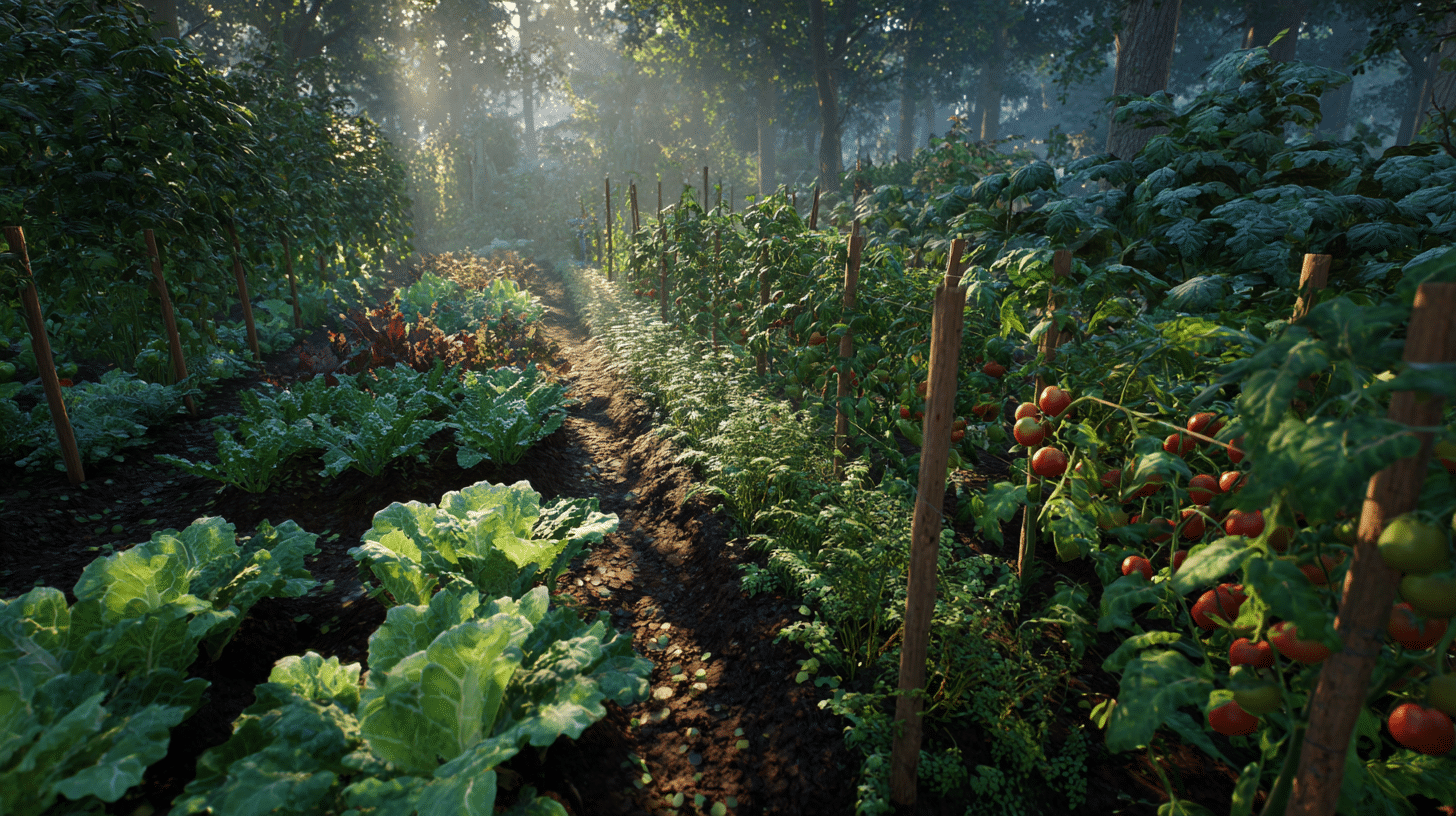May marks the ideal time for planting your summer vegetable garden, but selecting the right crops can feel overwhelming with numerous options available.
Many gardeners waste money on varieties that fail in their local conditions or struggle with poor timing decisions.
The warming soil and longer days create ideal conditions for rapid germination. However, many gardeners struggle with timing and variety selection, which can lead to disappointing harvests or complete crop failures.
This guide features proven vegetables that thrive when planted in May, providing reliable harvests from June through October. Each vegetable includes specific varieties, exact planting instructions, and harvest timing to ensure your gardening success.
You’ll have everything needed to create a productive kitchen garden that feeds your family throughout the growing season.
Why May Is Ideal for Planting Veggies?
May offers the perfect sweet spot for achieving success in vegetable gardening. Soil temperatures finally reach the 12-15°C range that warm-season crops need for strong germination, while frost risk drops to nearly zero in most regions.
The longer daylight hours provide 12-14 hours of natural light that heat-loving plants crave for vigorous growth.
Spring rainfall patterns help establish young plants without the need for constant watering, although consistent moisture remains crucial. Garden centers stock their widest selection of healthy seedlings and seed varieties in May, providing you with the best choices for your space.
23 Vegetables to Plant This May
Get your garden growing with these easy and rewarding vegetables to plant in May, perfect for fresh summer harvests, beginner-friendly sowing, and flavorful meals straight from the soil.
1. Beetroot Bliss
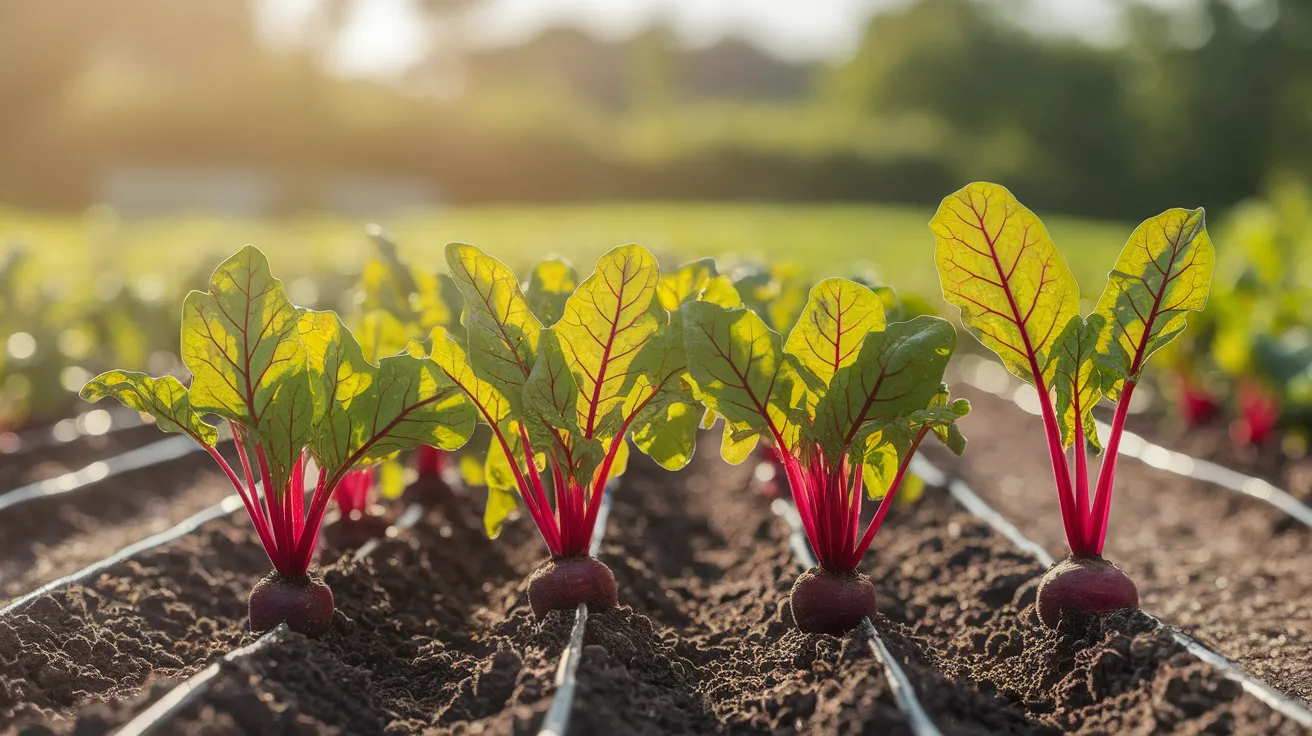
Harvesting time: June to October.
How to grow: Sow beetroot seeds directly into shallow drills 2cm deep, spacing rows 30cm apart for easy access. Each seed contains 2-3 individual seeds, so expect multiple seedlings from each spot.
Thin clusters to leave the strongest seedling when plants reach 5cm tall, spacing them 10cm apart. Select reliable varieties, such as ‘Boltardy’ or ‘Touchstone Gold’, for optimal results.
2. Lettuce Layers
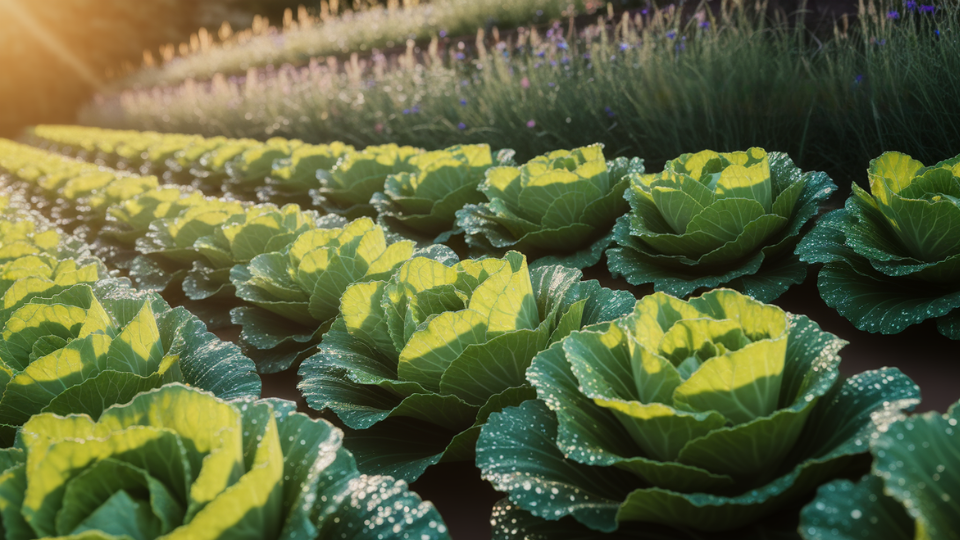
Harvesting time: Late June onwards.
How to grow: Sow lettuce seeds thinly in shallow rows, covering lightly with fine soil. Choose a spot with morning sun but afternoon shade to prevent bolting in warm weather.
For continuous harvests, sow fresh seeds every two weeks throughout May and early June. Water regularly to keep the soil moist and thin seedlings to 15cm apart when they are large enough to handle.
3. Tomato Temptation
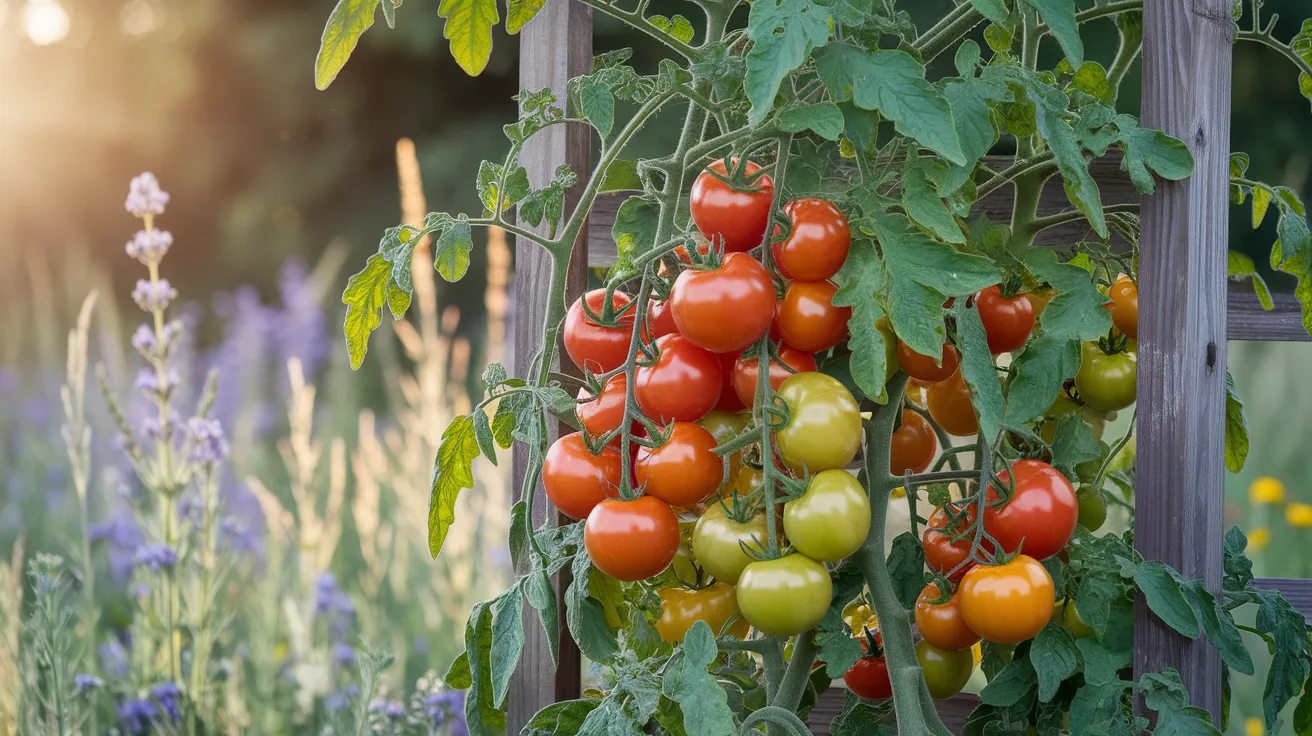
Harvesting time: July to September.
How to grow: Choose the sunniest garden spot and plant seedlings 60cm apart. Bury two-thirds of the stem deep, add compost, and install support canes immediately. Water deeply twice weekly to prevent fruit problems.
Try ‘Gardener’s Delight’ for cherry tomatoes or ‘Moneymaker’ for slicing. Pinch out side shoots weekly and feed with tomato fertilizer once fruit sets.
4. Garlic Zest
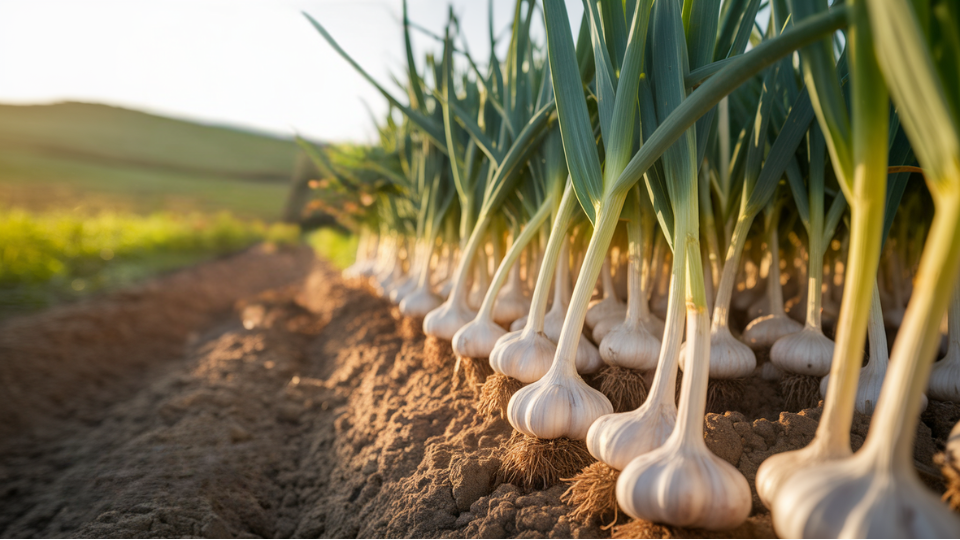
Harvesting time: July to August.
How to grow: Plant spring garlic varieties like ‘Cristo’ or ‘Solent Wight’ by selecting firm, healthy cloves that are free from soft spots or green shoots. Plant cloves pointed end up, 5cm deep in well-drained, sunny soil, spacing them 15cm apart in rows.
Water during dry periods, but avoid overwatering, as garlic bulbs rot in waterlogged conditions. Spring garlic matures in just 12-14 weeks, much faster than autumn-planted types.
5. Onion Layers
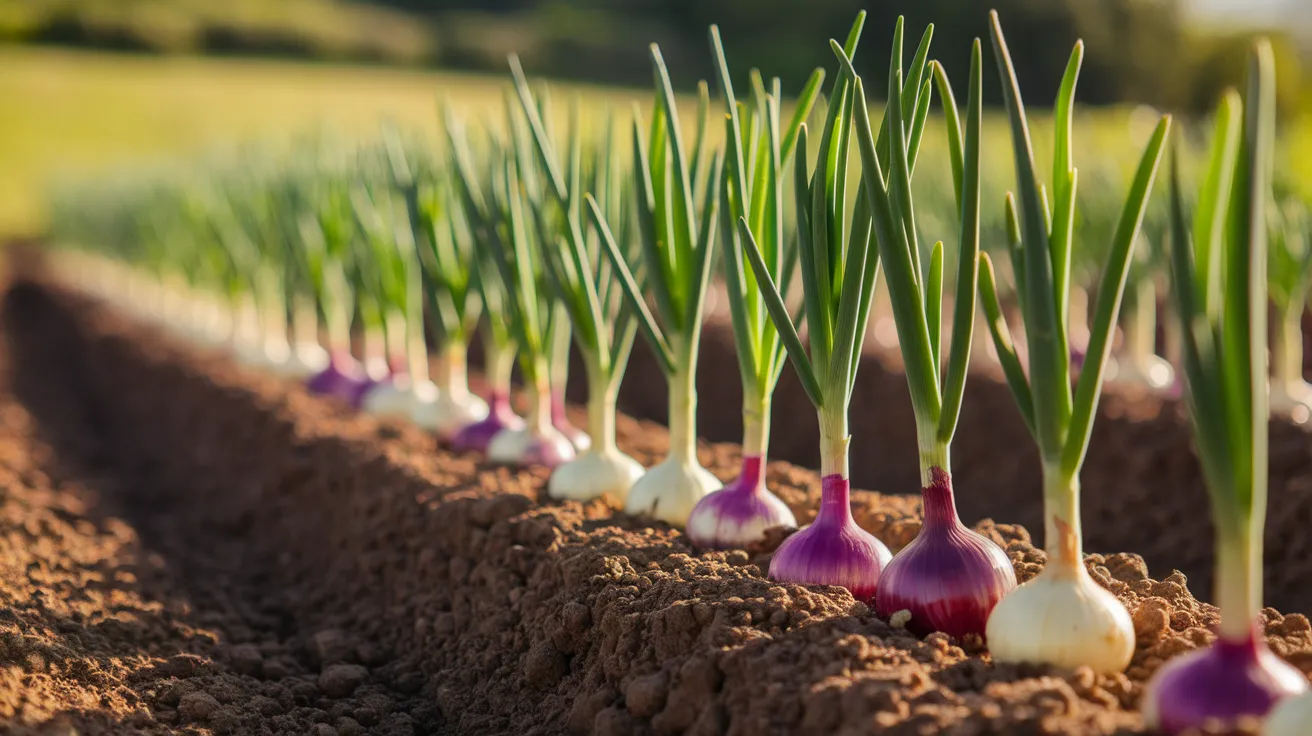
Harvesting time: August to September.
How to grow: Choose firm, dry onion sets smaller than 2cm in diameter, avoiding any with soft spots or green shoots. Plant sets with tips just showing above the soil, spacing them 10 cm apart in rows 25 cm apart.
Keep the bed completely weed-free throughout the growing season, as onions cannot compete with weeds for nutrients. Varieties like ‘Sturon’ store well while ‘Red Baron’ adds attractive purple-red color to dishes.
6. Cucumber Crunch
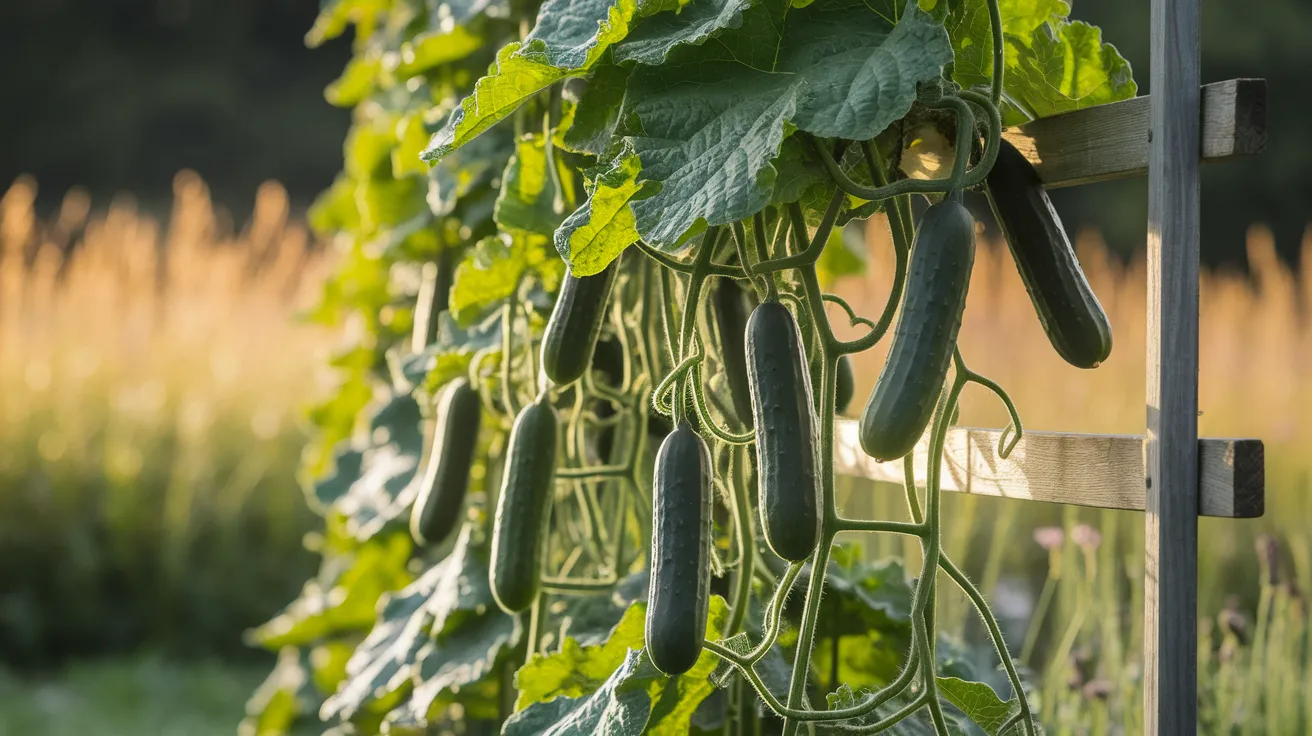
Harvesting period: July to September.
How to grow: Wait until soil temperatures reach 15°C before planting cucumber seedlings or sowing directly. Select a sheltered, sunny location and prepare the soil with plenty of compost to achieve rich, moisture-retentive conditions.
Plant seedlings 45cm apart and provide climbing support immediately using canes or a trellis. Water regularly at the soil level and feed weekly once flowering begins. Harvest regularly to encourage continued production.
7. Broccoli Bites
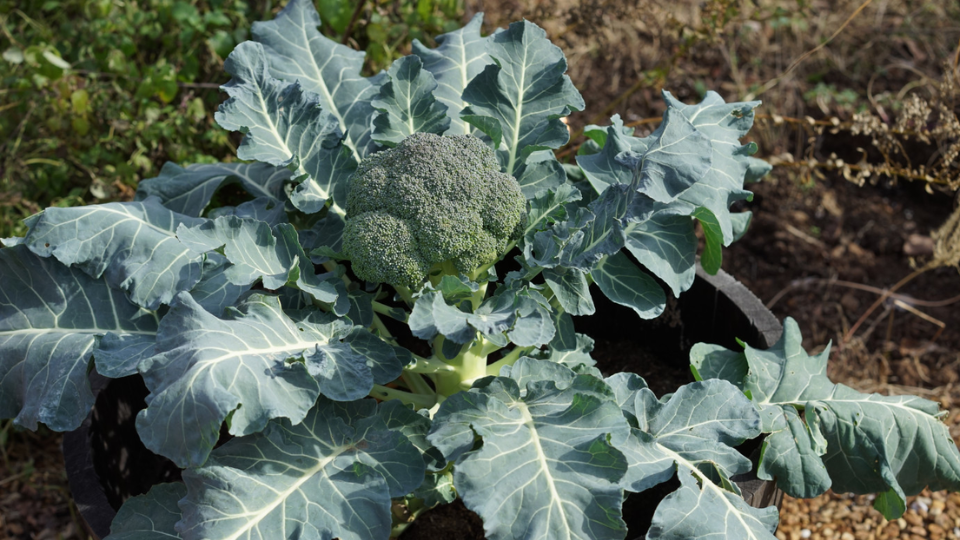
Harvesting period: September to November.
How to grow: Sow broccoli seeds in seed trays or modules, then transplant at 6 weeks when seedlings have 4-6 true leaves. Choose firm, fertile soil that drains well and space plants 18 inches (45 cm) apart in rows.
Protect against cabbage white butterflies by using fine-mesh covers and watering regularly during the establishment phase. Varieties like ‘Marathon’ tolerate heat well, while ‘Green Magic’ produces compact heads with useful side shoots.
8. Chilli Kick
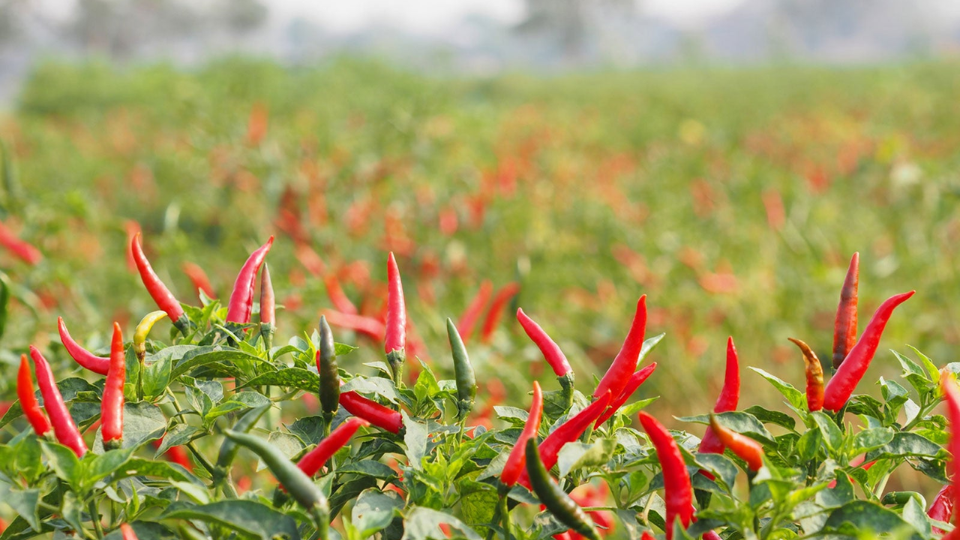
Harvesting period: August to October.
How to grow: Choose the warmest, most sheltered spot in your garden and harden off plants gradually over 10 days before planting out. Plant in rich, well-draining soil, spacing plants 45cm apart with support canes for taller varieties.
Water consistently, but avoid overwatering. Pinch the growing tips at a height of 20cm to encourage bushy growth. Feed with high-potash fertilizer once flowering begins and harvest regularly, wearing gloves for hot varieties.
9. Carrot Crunchers

Harvesting period: July to October.
How to grow: Sow carrot seeds directly into light, sandy soil that drains freely, removing all stones that could cause forking. Create shallow drills 1 cm deep and sow seeds thinly to reduce the need for thinning, covering with fine soil or sand.
Keep the soil consistently moist until germination and thin the seedlings to a 5cm spacing when they reach finger height. Choose early varieties like ‘Amsterdam Forcing’ for quick crops or maincrop ‘Chantenay’ for winter storage.
10. French Bean Feast
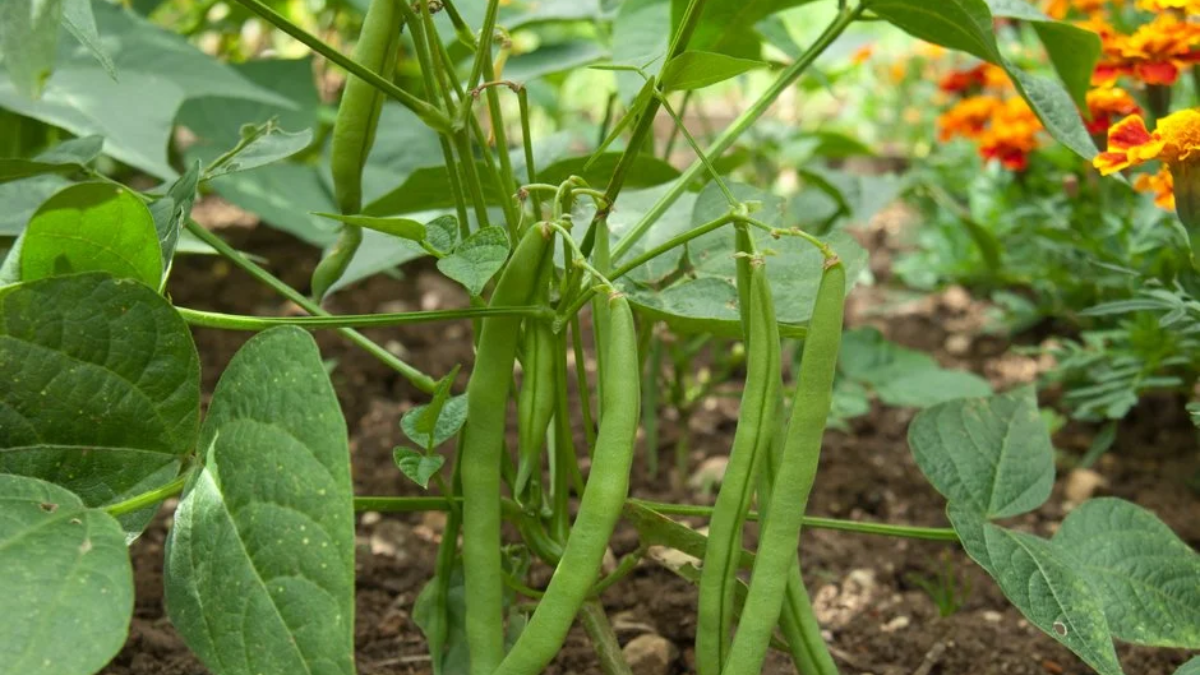
Harvesting period: July to September.
How to grow: Wait until the soil temperature reaches 12°C and no frost is forecast before sowing French beans. Choose a warm, sheltered spot with morning sun protection and sow seeds 5 cm deep, 15 cm apart.
Provide 2m support canes for climbing varieties like ‘Blue Lake’, which produce higher yields than dwarf types. Water regularly, but avoid overwatering. Earth up around the plant bases for extra stability.
11. Potato Gold
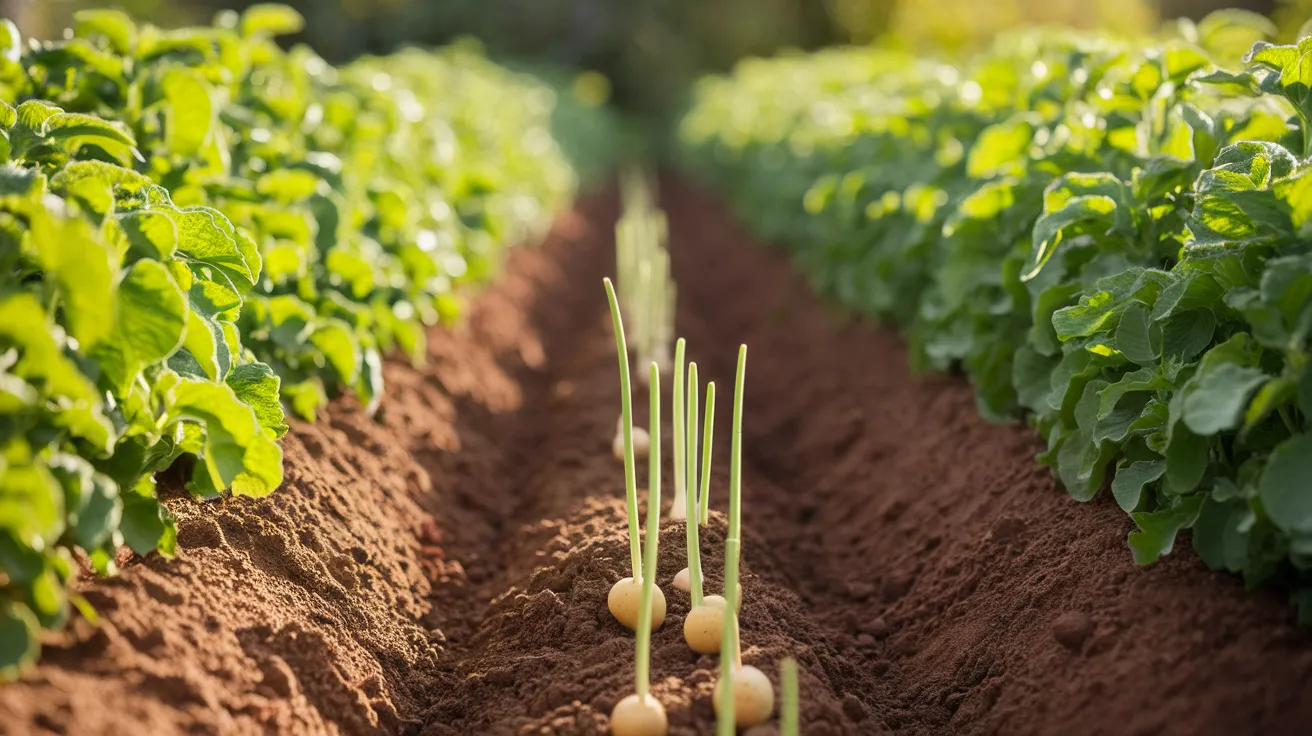
Harvesting time: July to August.
How to grow: Start with chitted seed potatoes that have developed sturdy 2cm shoots over 4-6 weeks in a light, cool place. Dig trenches 15 cm deep, 60 cm apart, and plant tubers 30 cm apart, with shoots pointing upward.
Cover initially with 10cm of soil, then earth up gradually as shoots emerge, leaving just the tips showing each time. Varieties like ‘Charlotte’ produce waxy salad potatoes, while ‘Kestrel’ offers purple-skinned potatoes perfect for roasting.
12. Kale Kickstart
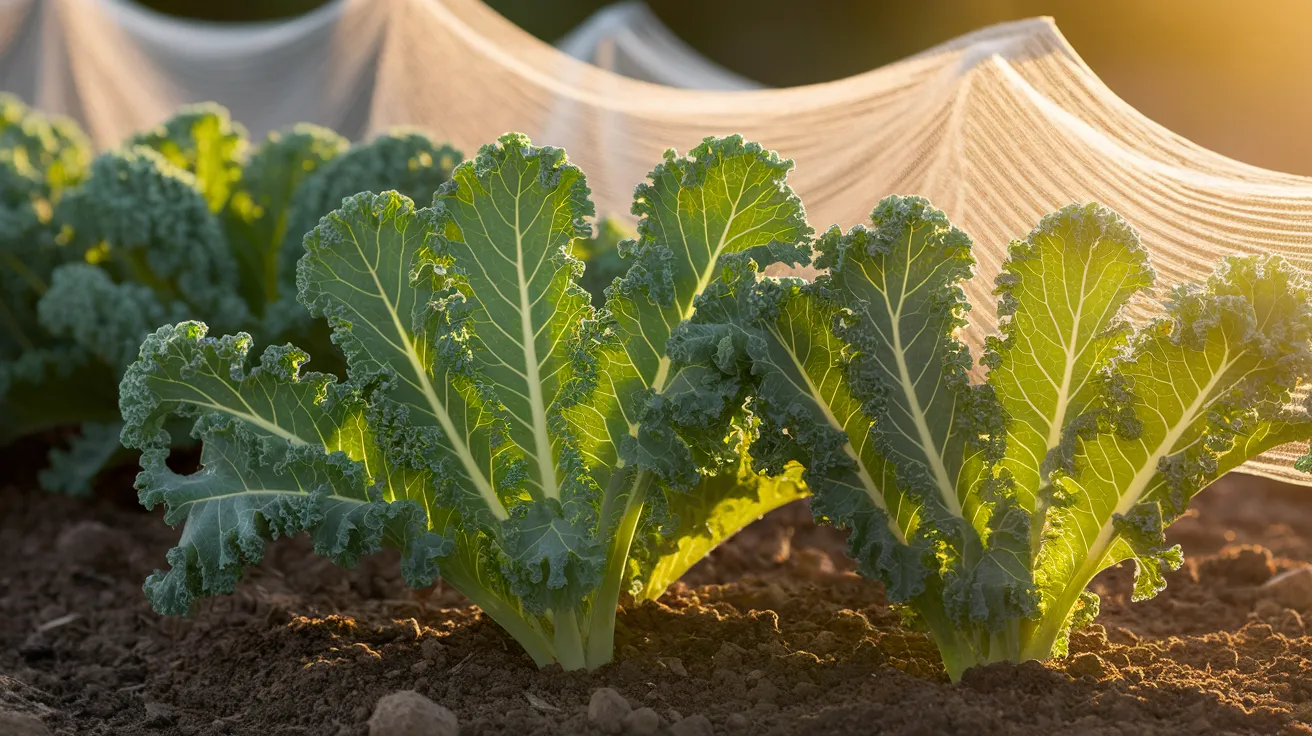
Harvesting period: August to February.
How to grow: Sow kale seeds in May for plants that establish during mild weather and thrive through winter months. Choose firm, fertile soil with good drainage and sow directly or transplant seedlings, spacing plants 45cm apart.
Net plants immediately to protect from cabbage white butterflies and flea beetles that can destroy young growth. Varieties like ‘Dwarf Green Curled’ remain compact, while ‘Red Russian’ offers a sweet flavor that improves after frost.
13. Courgette Carnival
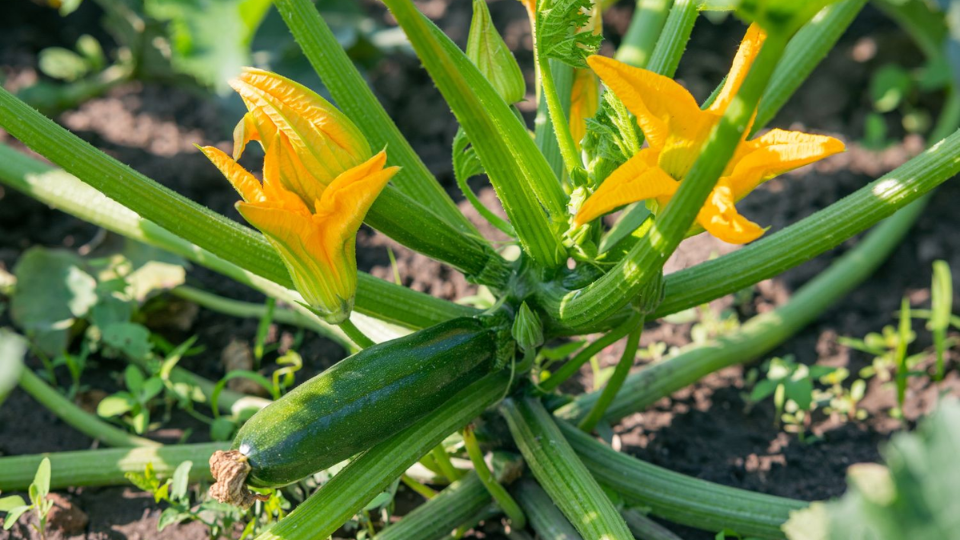
Harvesting period: July to September.
How to grow: Plant courgette seedlings in a warm, sunny location with soil enriched with compost or well-rotted manure. Space plants 90cm apart after gradually hardening them off, as they require considerable space for their sprawling growth.
Water deeply twice weekly and mulch heavily around plants to retain moisture and keep fruits clean. Feed weekly with liquid fertilizer once flowering begins and harvest when fruits reach 15-20 cm in length for optimal flavor.
14. Spinach Boost
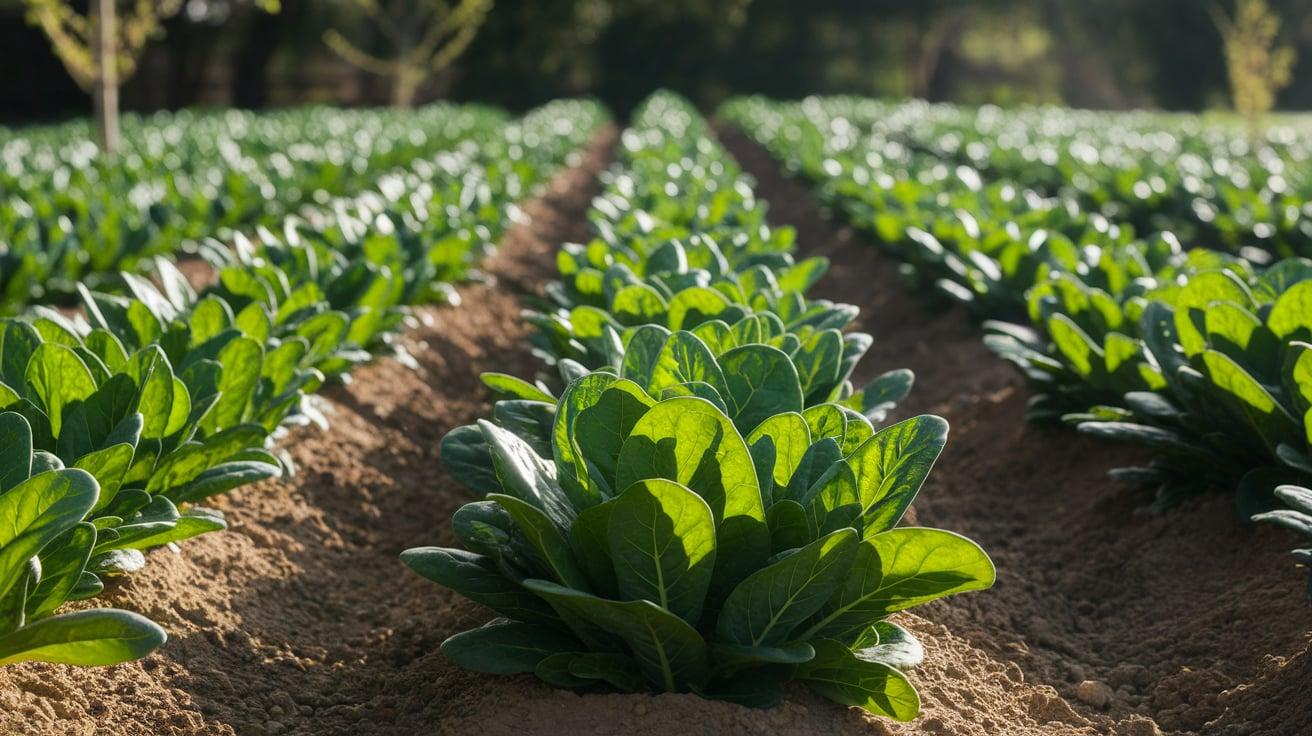
Harvesting period: June to September.
How to grow: Choose bolt-resistant varieties like ‘Medania’ for late spring sowing and sow seeds every 2-3 weeks for continuous harvests. Sow in rows 30cm apart, covering lightly and keeping soil consistently moist until germination occurs.
Provide afternoon shade during warm weather to prevent premature bolting and thin seedlings to 15cm spacing. Water regularly to maintain consistent moisture, as drought stress makes leaves bitter and triggers early flowering.
15. Radish Rocket
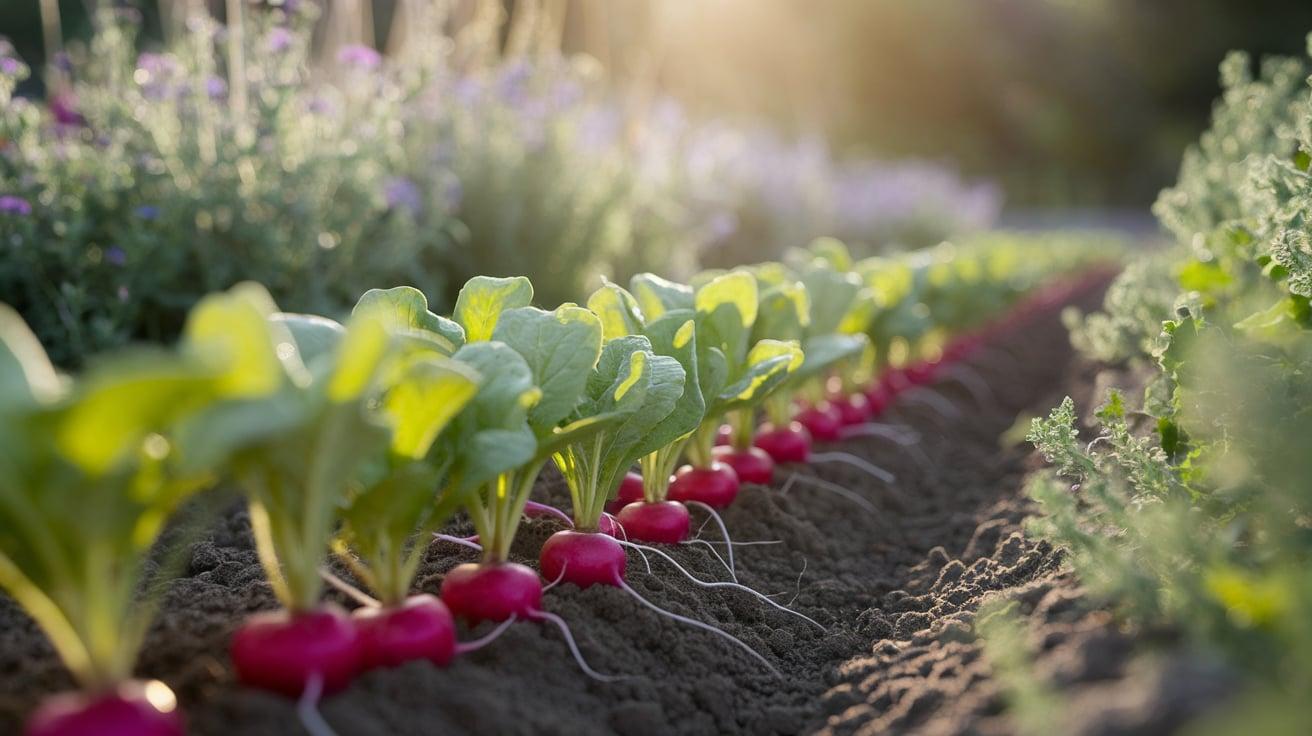
When to harvest: 4-6 weeks after sowing.
How to grow: Sow radish seeds 1cm deep in short rows, spacing them 2cm apart in light, fertile soil that drains freely. Keep soil consistently moist throughout growth, as any drought stress ruins eating quality and makes roots woody.
Sow little and often, every two weeks, for continuous supplies, choosing varieties like ‘Cherry Belle’ for their round, red roots. Harvest when roots reach marble size but before they become oversized and develop woody centers.
16. Swiss Chard Delight
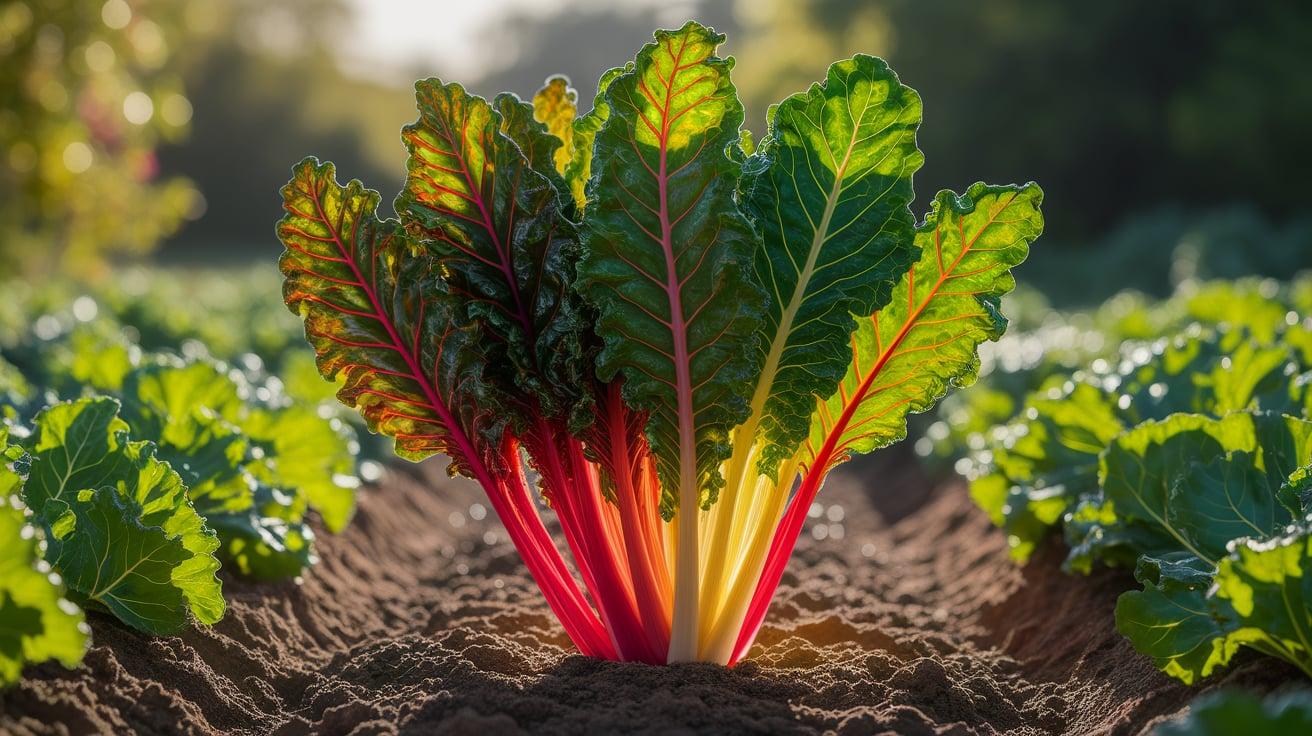
Harvesting period: July to October.
How to Grow: Sow Swiss chard seeds 2 cm deep in fertile, moisture-retentive soil, spacing them 5 cm apart initially. Thin to final spacing of 30cm between plants and choose varieties like ‘Bright Lights’ for rainbow stems or ‘Ruby Red’ for dramatic color.
Keep soil consistently moist and remove flower heads to maintain leaf production throughout the season. Begin harvesting outer leaves after 8-10 weeks, cutting cleanly at the base while leaving the center intact.
Looking at your vegetable planting guide, here are 7 additional vegetables that work perfectly for May planting:
17. Basil Bonanza
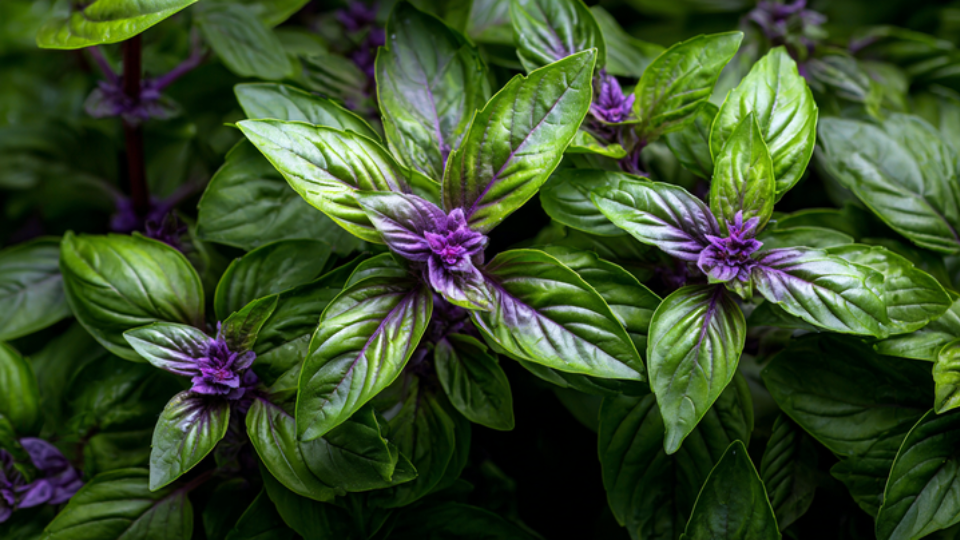
Harvesting period: June to October.
How to grow: Wait until nighttime temperatures stay above 10°C before planting basil outdoors. Select the warmest, most sheltered spot with 6 hours or more of direct sunlight daily.
Plant seedlings 30cm apart in rich, well-draining soil and pinch out flower buds regularly to keep leaves tender. Water the soil at the base to prevent fungal problems and harvest leaves frequently to encourage bushy growth. ‘Genovese’ offers classic flavor while ‘Purple Ruffles’ adds color to dishes.
18. Runner Bean Rush
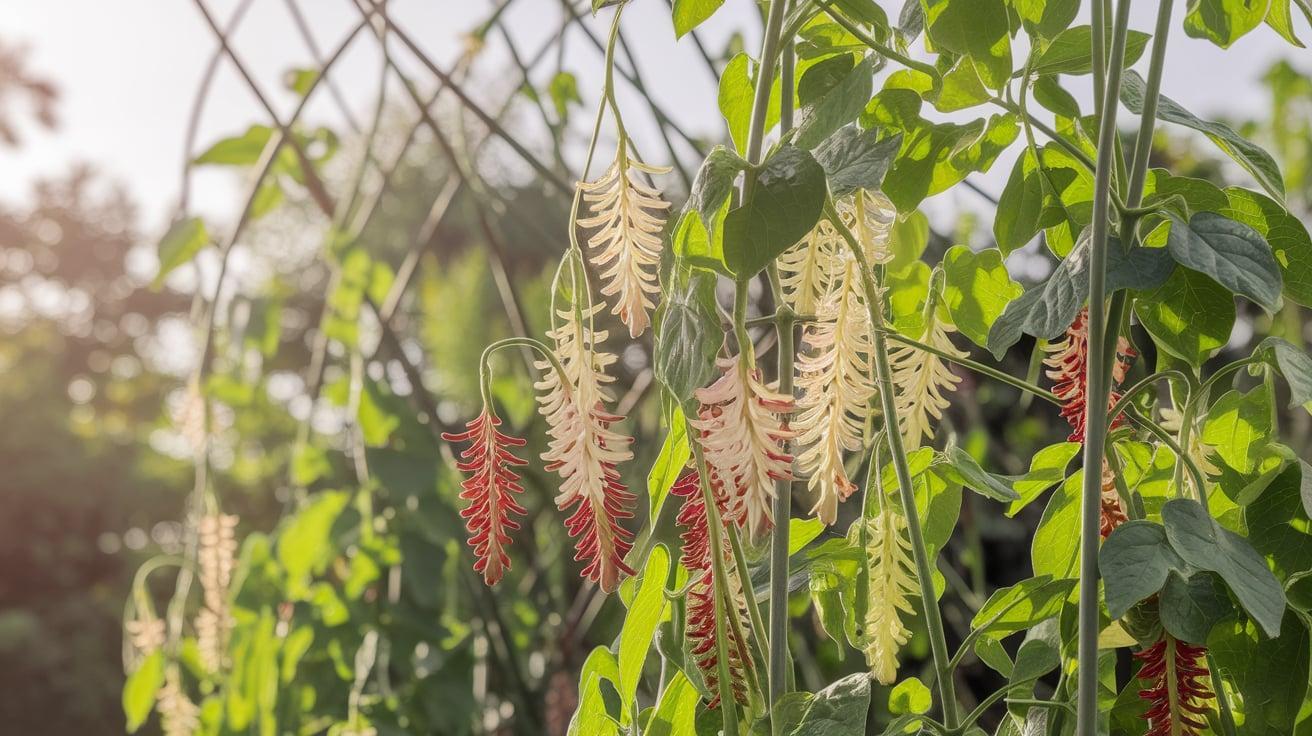
Harvesting period: July to October.
How to grow: Create strong support structures using 2.5m canes arranged in wigwam shapes before planting. Sow seeds 5cm deep at the base of each cane after the soil reaches 12°C.
Runner beans require consistent moisture, so water them deeply twice a week and apply a thick layer of mulch around the base of the plants. Varieties like ‘Scarlet Emperor’ produce beautiful red flowers followed by tender pods, while ‘White Lady’ offers stringless beans perfect for cooking.
19. Sweetcorn Success
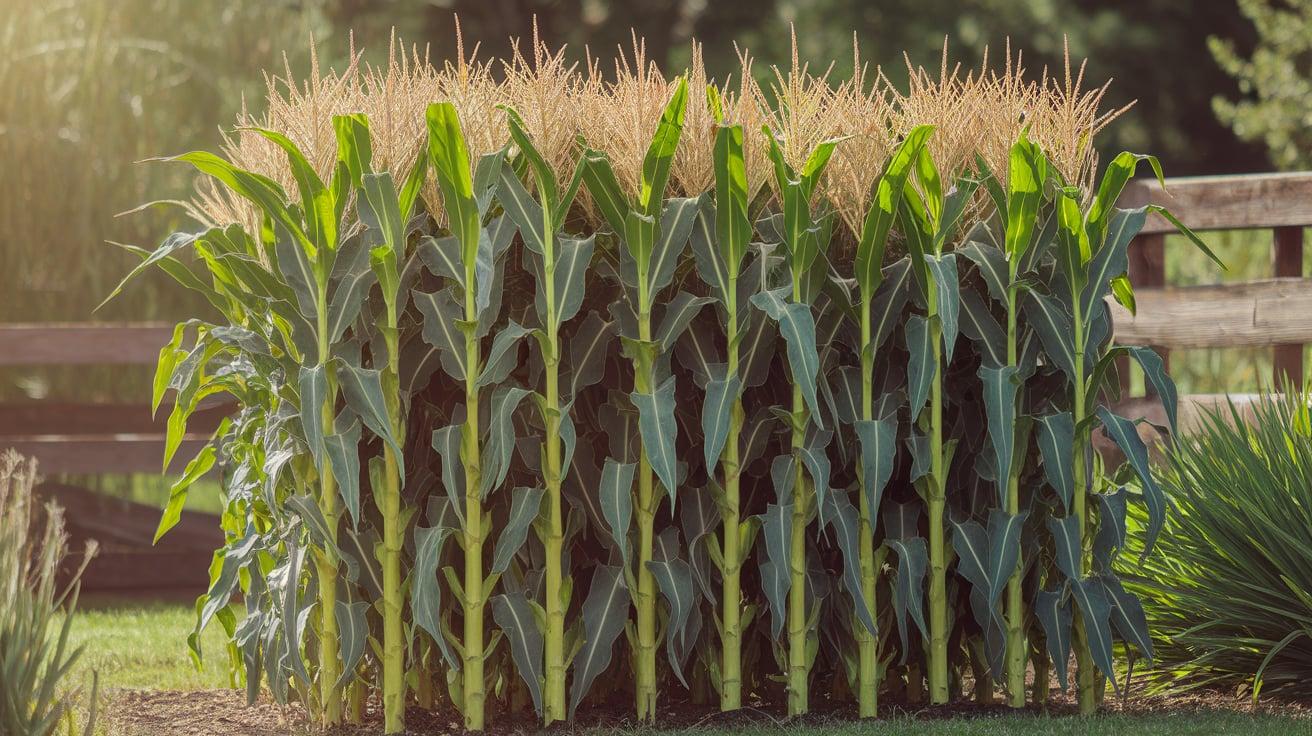
Harvesting period: August to September.
How to grow: Plant sweet corn in blocks rather than rows to ensure proper pollination, spacing plants 35cm apart in both directions. Choose a sunny, sheltered location and plant seeds 2cm deep when soil temperature reaches 15°C.
Earth up around stems for stability and water regularly during dry spells. Test ripeness by pressing kernels – they should release milky juice when ready. ‘Swift’ matures quickly while ‘Incredible’ stays sweet longer after picking.
20. Pea Power
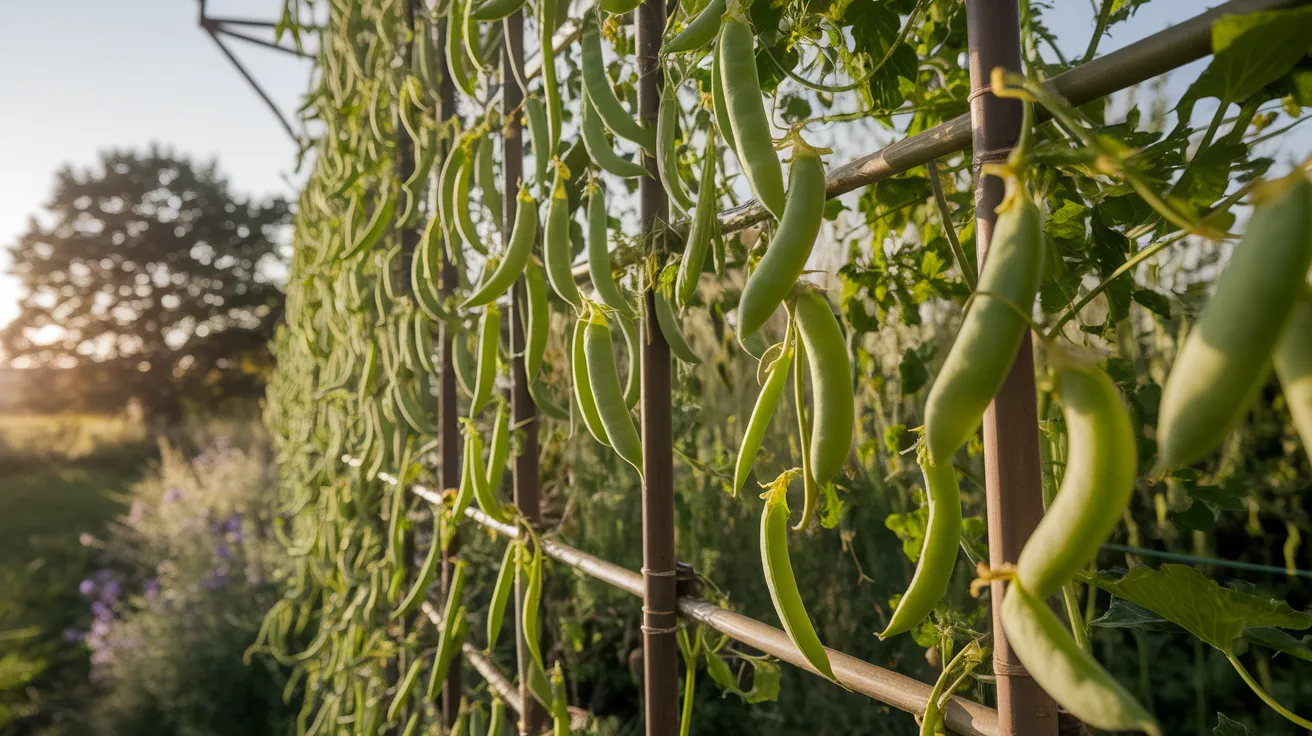
Harvesting period: July to August.
How to grow: Choose mangetout or sugar snap varieties for May sowing, as they handle warmer conditions better than traditional peas. Sow seeds 5cm deep, 10cm apart along support netting or canes.
Keep the soil moist but not waterlogged and provide 1.5m supports immediately after planting. Pick pods regularly to encourage continued production. ‘Oregon Sugar Pod’ produces flat, tender pods while ‘Sugar Ann’ offers sweet, crunchy snap peas.
21. Aubergine Adventure
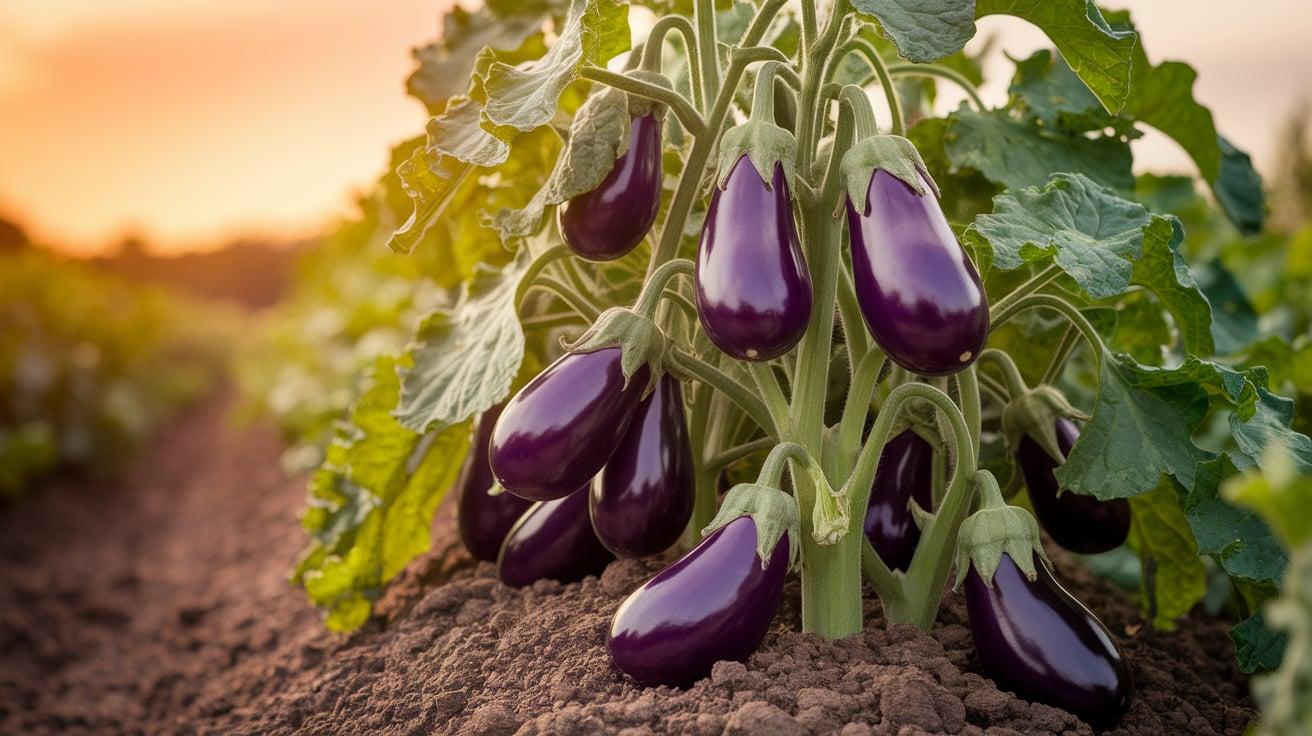
Harvesting period: August to October.
How to grow: Choose compact varieties, such as ‘Moneymaker’, for cooler climates and plant them in the warmest, most sheltered spot available. Space plants 50cm apart in rich, fertile soil with excellent drainage.
Support plants with sturdy canes and remove lower leaves to improve air circulation. Water consistently and feed weekly once fruits begin forming. Harvest when the skin is glossy and firm but before it becomes dull.
22. Pepper Perfection
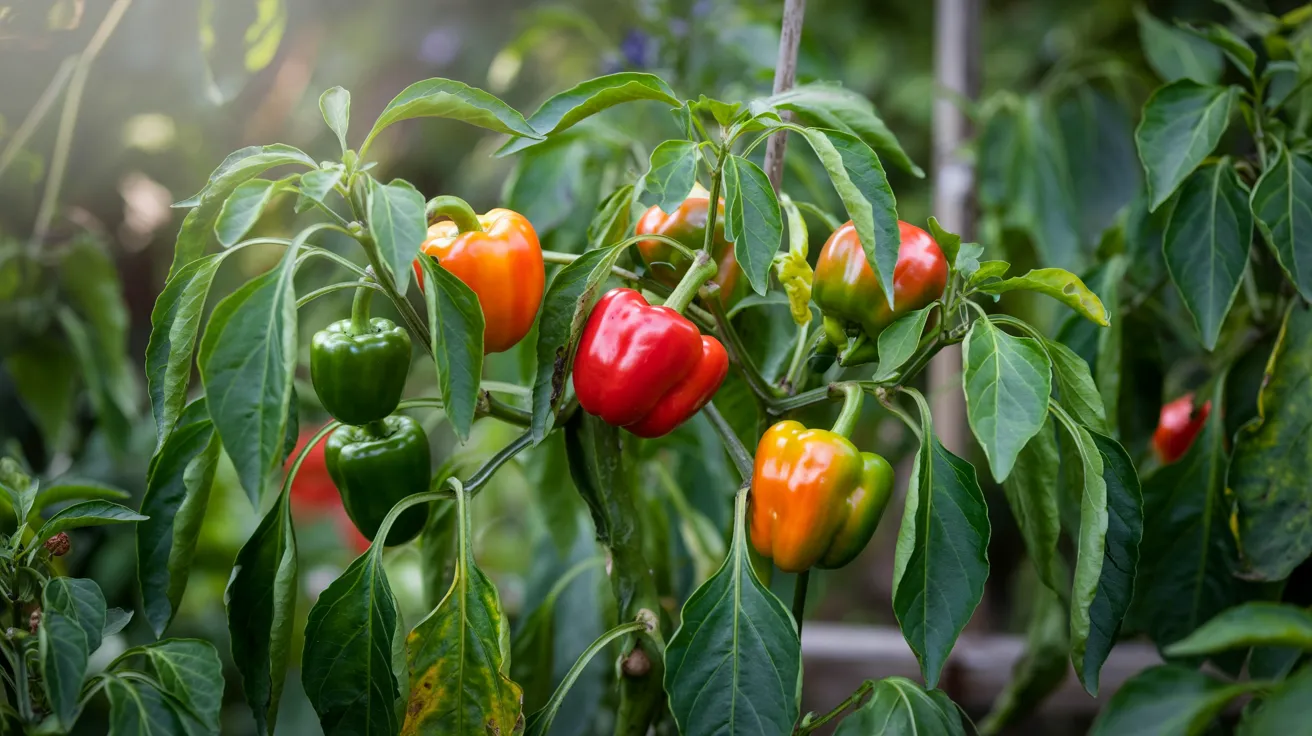
Harvesting period: July to October.
How to grow: Harden off pepper plants gradually over 10 days before planting in warm, fertile soil. Choose a sunny, wind-protected location and space plants 40cm apart with individual support canes.
Water regularly, but avoid overwatering, as this can cause root problems. Pinch out the first flowers to encourage stronger plant development. ‘California Wonder’ produces reliable sweet peppers while ‘Hungarian Hot Wax’ adds spice to dishes.
23. Cabbage Champion
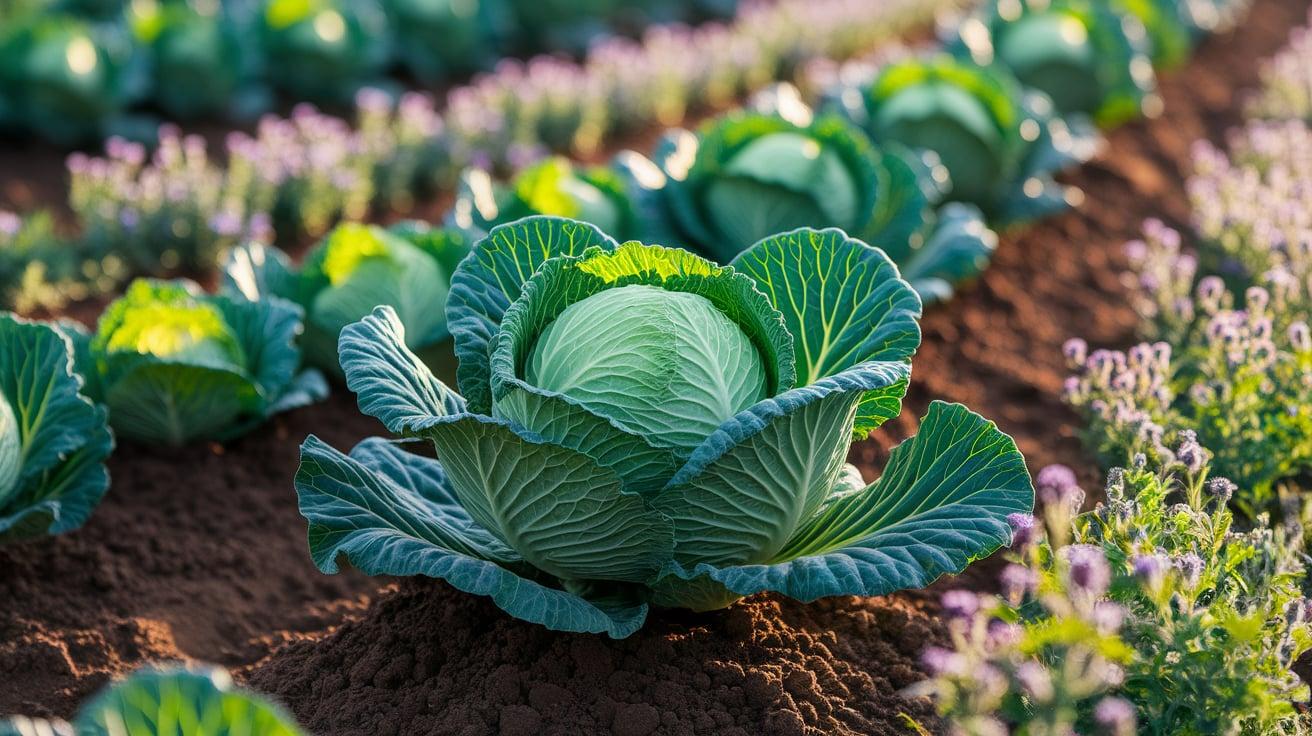
Harvesting period: August to November.
How to Grow: Transplant cabbage seedlings when they have 4-6 true leaves, spacing them 45 cm apart in firm, fertile soil. Choose varieties like ‘Minicole’ for small gardens or ‘Derby Day’ for larger heads.
Protect your plants from cabbage white butterflies by using fine mesh covers and ensuring consistent watering to prevent splitting. Firmly water the soil around plants regularly and harvest when the heads feel solid but before they split open.
Conclusion
May planting sets the foundation for months of fresh, homegrown vegetables that will fill your kitchen with flavor and nutrition.
These proven crops offer something for every gardener, from quick radishes that satisfy impatient beginners to long-season tomatoes that reward careful attention with abundant harvests.
Success comes from choosing the right varieties, timing your sowings correctly, and providing consistent care throughout the growing season.
Start with easier crops, such as lettuce and beetroot, to build confidence, then expand to more challenging vegetables as your skills develop.
Your May planting efforts will provide fresh vegetables from June through February, reducing grocery bills while improving your family’s health. Which vegetables will you plant first this May? Share your gardening plans and results with fellow growers in the comments below.
